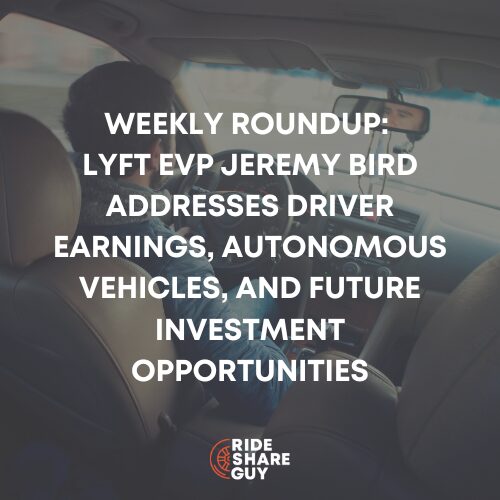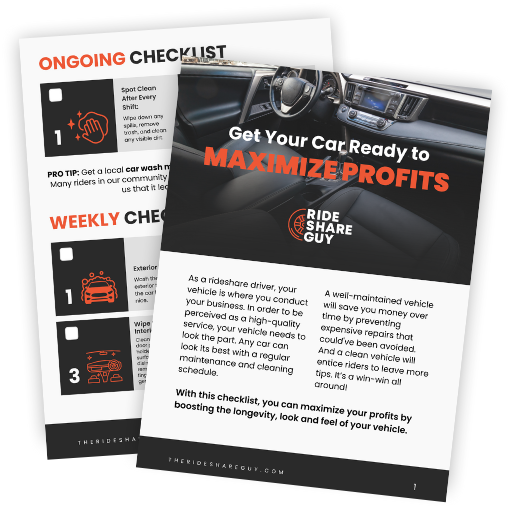Uber impressed investors with its Q2 results, Lyft’s stock decline despite turning a profit, Minnesota Governor Tim Walz’s role in negotiating rideshare driver pay, Gen Z interns’ rideshare preferences, and Lyft’s new “Price Lock” subscription service for commuters. We break it all down for you.
1 in 3 Americans Have A Side Hustle

SOURCE – USA Today
New insights from Bankrate show more than one in three U.S. adults, roughly 36%, are working a side hustle in 2024. This is a drastic jump from 2019 when only 19% of U.S. adults said they had a side hustle. The average side hustler now earns $891 per month, up from $810 last year.
- The research shows that inflation, remote work, and high interest rates have really forced more people into side hustling, with 32% of respondents saying they’ll always need an extra job to pay the bills.
- Gen Zers and millennials are more prone to engaging in side hustles compared to their older counterparts, and adults with minor children are more inclined to take on extra work than those without kids.
- Are rideshare drivers losing out with this trend? Uber and Lyft have really targeted part-time, casual rideshare drivers to increase the supply of rideshare drivers on each respective platform, making full-time rideshare driving harder to sustain as a job.
Uber’s Q2 Results Beat Analyst Estimates, Impressing Investors, But How Did Drivers Fare?
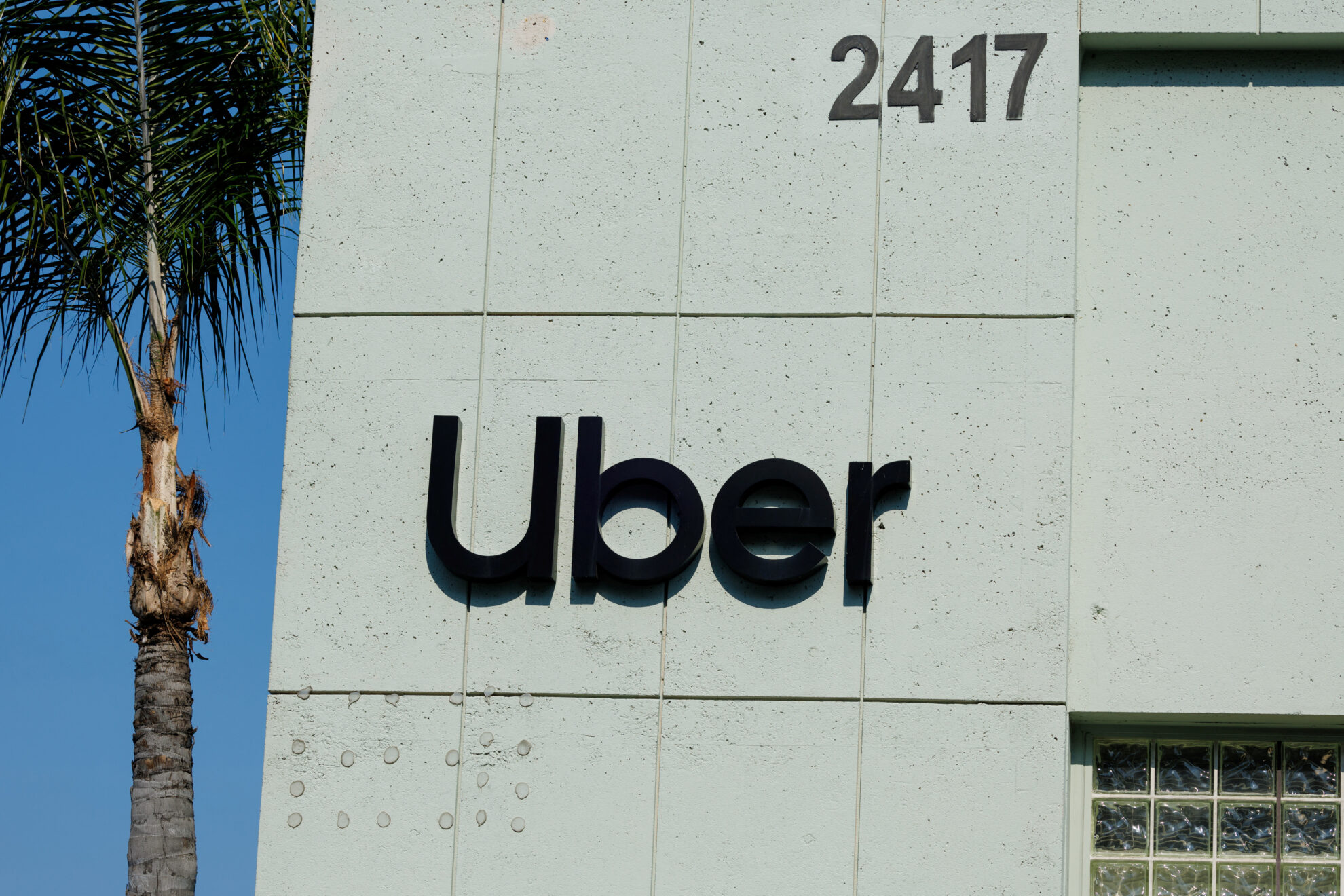
SOURCE – Reuters
Uber’s second-quarter results surpassed Wall Street expectations, driven by strong demand for rideshare and food delivery services. Uber’s revenue grew 16% to $10.70 billion, while gross bookings increased 19% to $39.95 billion, beating analysts’ expectations.
The rideshare portion of the business saw a 25% increase in revenue to $6.13 billion, and its delivery business reported revenue of $3.29 billion.
- On the call, Uber CEO Dara Khosrowshahi acknowledged that an oversupply of drivers has resulted in reduced rates for those working on the platform, explaining that “more driver supply brings down prices for riders and improves reliability.”
- 35% of Uber consumers are now engaging with multiple services within the platform (i.e., rideshare and delivery). Uber noted that multi-product consumers spend three times more than other consumers.
- Despite concerns about consumer spending, Uber stated that it has not seen any softened consumer spending on its platform.
- The company’s shares rose 5% on Tuesday following earnings.
Your Take: Drivers, we know Uber’s earnings are up, but how about yours? Feel free to share your Q2 earnings with us by replying to this email, and we’ll break them down in a future newsletter issue.
Lyft’s Stock Tumbles Despite Making Its First Profit
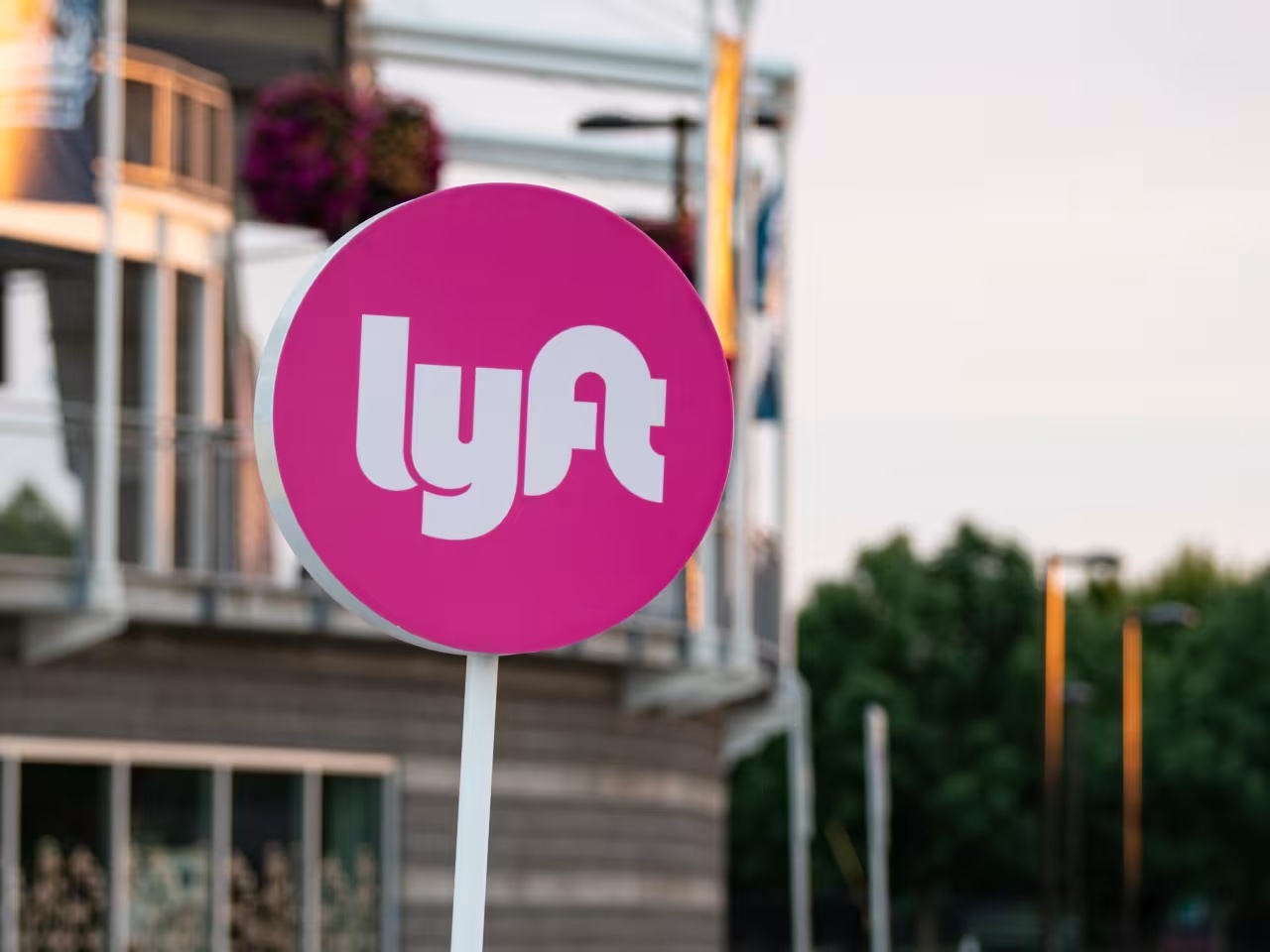
SOURCE – Barron’s
Lyft’s second-quarter earnings were also released this week. While the company achieved a significant milestone by turning a profit for the first time (on a GAAP basis), investors are not too optimistic about the rideshare company’s prospects.
Lyft’s shares dropped 17% after earnings on Wednesday despite the company reporting record-breaking numbers in both rides and active riders.
- In the second quarter, Lyft provided 205 million rides, a 15% increase from the previous year, and had 23.7 million active riders, a 10% jump. CEO David Risher attributed this growth to the company’s focus on customer satisfaction, stating that both drivers and riders are choosing Lyft in record numbers.
- However, investors were not impressed with Lyft’s outlook for the third quarter. The company’s predictions for bookings and earnings fell short of Wall Street analysts’ expectations, leading to a sharp decline in stock price.
Tim Walz: From Brokering Minnesota’s Rideshare Deal to Democratic VP Nominee
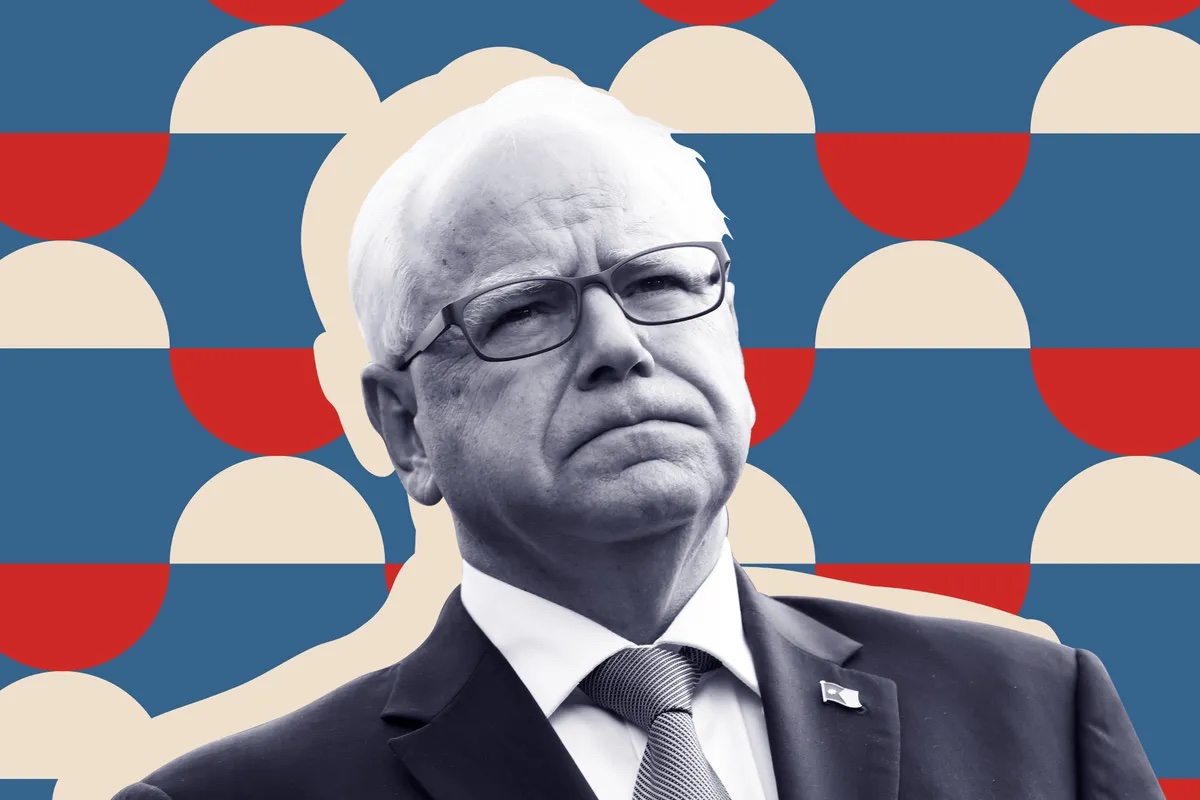
SOURCE – The Verge
A new story from The Verge details how Minnesota Governor Tim Walz, now the vice presidential nominee, faced a challenge in 2022 when progressive Minnesota politicians pushed to raise minimum pay for Uber and Lyft drivers.
The companies threatened to leave the state if the bill passed, putting Walz in a difficult position.
- After vetoing the initial legislation, Walz signed a compromise bill a year later that raised driver pay by 20%, provided new insurance for on-the-job injuries, and made it harder for Uber and Lyft to deactivate drivers. This made Minnesota the second state to regulate rideshare driver pay through legislation.
- However, the bill did not address driver classification as employees rather than independent contractors, a crucial issue for many driver groups seeking additional legal benefits. The ongoing debate over classification could have significant implications for rideshare drivers nationwide.
- Some critics have argued that Walz was dismissive of new, smaller rideshare companies that could disrupt Uber and Lyft.
Gen Z Interns Reveal Rideshare Preferences, Robotaxi Attitudes
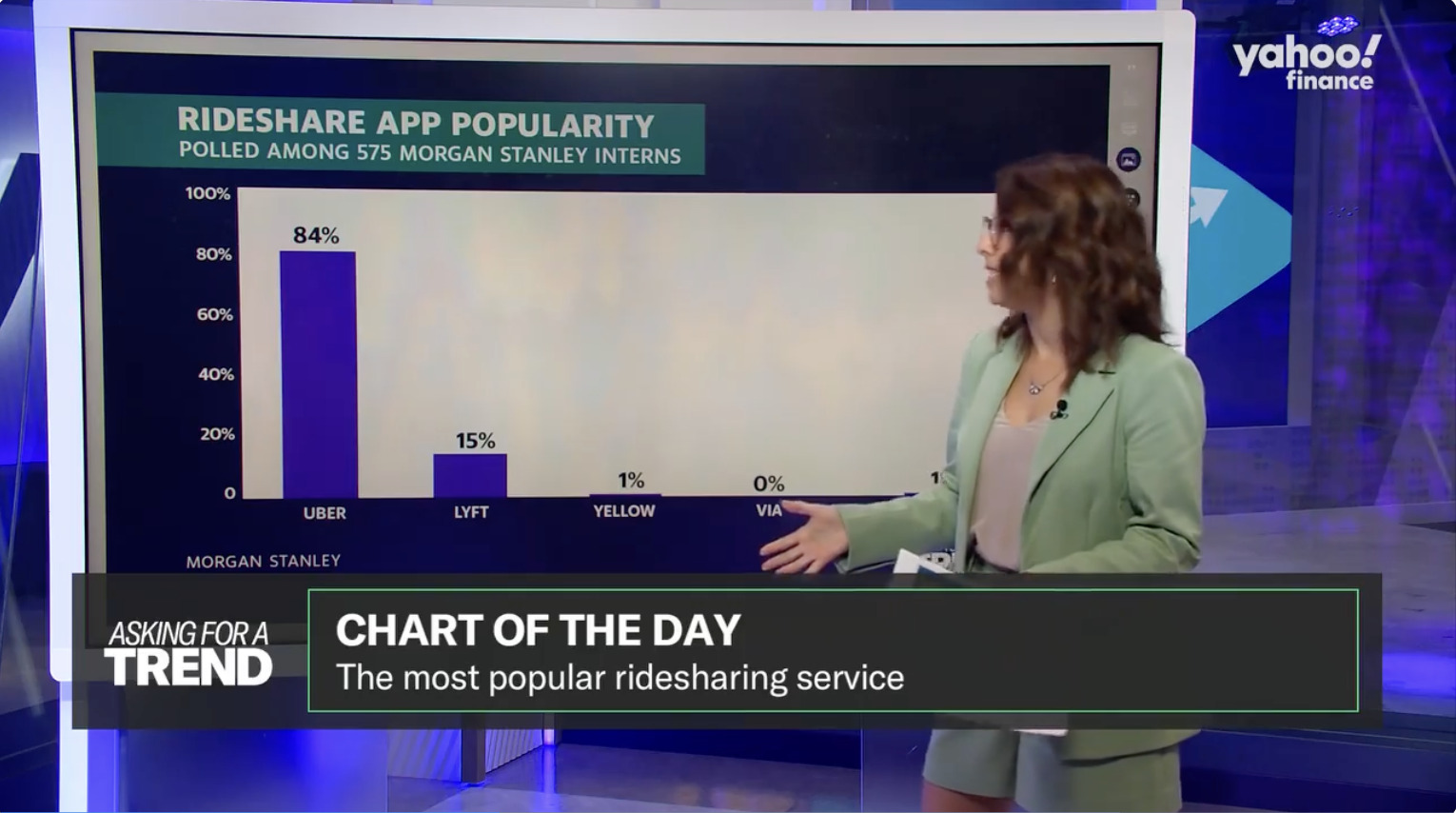
SOURCE – Yahoo! Finance
A recent poll conducted by Morgan Stanley among 575 Gen Z interns in 2024 provides insight into the rideshare habits and attitudes of young professionals.
According to the poll, Uber dominates the rideshare market among Gen Z interns, with 84% of respondents choosing the app as their preferred service. Lyft comes in a distant second at 15%, while traditional yellow cabs and other services each garnered only 1% of the vote.
- While the sample size is small, the results offer an interesting glimpse into the preferences of Gen Z, a rising economic force.
- The poll found that 29% of respondents use rideshare apps 1 to 4 times per week, while another 29% use them 5 to 10 times per week. 8% said they use these services more than 20 times per week, while 19% of the polled interns said they don’t typically use rideshare apps.
- When asked if they would ride in a robotaxi, 19% of respondents said they would not. However, when specifically asked about riding in a Tesla robotaxi, 31% said they would be willing to do so.
QUICK HITS
During this week’s earnings call, Lyft CEO David Risher teased a new monthly subscription service that is coming called “Price Lock.” This feature is designed for daily commuters who use Lyft regularly, which will cap surge pricing for specific routes at designated times. Price Lock will cost about $5 per month. – BUSINESS INSIDER
Uber said on this week’s earnings call that it expects to generate more than $1B in ad revenue in 2024. – ADWEEK
Instacart struck a partnership with Uber Eats, allowing its customers to order Uber Eats meals from the Instacart app. – PYMNTS
Must Listen Or Watch RSG Content
Here are this week’s featured podcast episode and YouTube videos:
- RSG259: Breaking Down GetAround and Hyrecar’s Vehicle Rental Programs
- Lyft Sends Threatening Cancel Emails When Driver Has 0% Cancel Rate
- Lyft Adds THIS To The Driver App
- How To STOP Taxi Drivers From Taking Your Job
- The Rideshare Guy en Español
- Make sure you Subscribe so you don’t miss out on future conversations and interviews!

